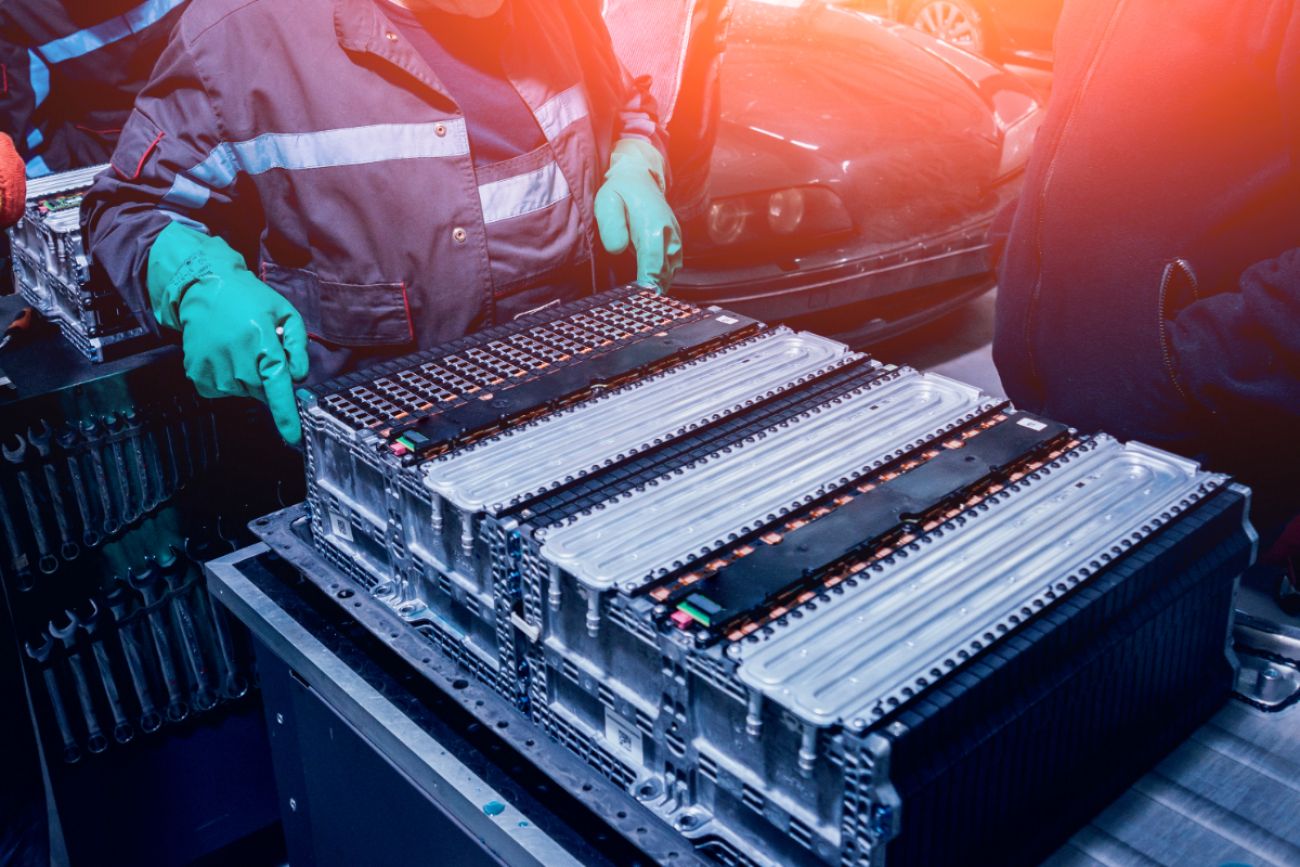Researchers say a copper shortage could imperil Michigan’s EV future

- Michigan automakers transitioning to EV production need more copper than mining companies are currently producing
- Deeper underground mining and advanced leaching technologies provide a possible solution
- Increased mining raises environmental concerns about pollution that could affect the Great Lakes ecosystem
In the race to go all-electric, Michigan automakers may hit a roadblock affecting yet another storied industry in the state: A shortage of copper.
A new International Energy Forum report, co-led by a University of Michigan researcher, found that a swift transition to EVs will require “unprecedented rates of mine production.”
The world’s active copper mines, the authors concluded, can’t deliver.
The report’s findings have big implications for Michigan, the epicenter of the U.S. automotive sector and a state with a long, fraught copper-mining history.
Amid mounting political pressure to address climate change and looming competition from overseas automakers, Michigan’s Big Three automakers have all set ambitious EV production targets. General Motors has committed to all-electric sales by 2035, and Ford Motor Co. has said it wants half of its sales to be EVs by 2030, although both now face a reality check amid a slowdown in EV sales.
Gov. Gretchen Whitmer wants 2 million electric vehicles on Michigan roads by 2030, while President Joe Biden’s administration recently set emission rules that aim to shift U.S. vehicle production to mostly electric or hybrid by 2032, part of a broader goal for 100 percent EV production by 2035.
But the researchers concluded that under the current policy landscape, in which it takes years, if not decades, to get a new mine approved, “it is highly unlikely that there will be sufficient additional new mines to achieve 100% EV by 2035."

Bridge Michigan spoke to Adam Simon, a professor of earth and environment sciences at the University of Michigan and lead researcher on the report, about its findings.
Here’s what you need to know:
Copper is essential to the EV transition
EVs require three to five times more of the highly-conductive metal than internal-combustion vehicles.
Copper is used in EV batteries, wiring and charging stations. It helps store energy and transfer it from lithium-ion or lead-acid batteries to the electric motors. It’s on the federal list of critical minerals needed to support the EV transition.
“Without copper,” Simon said, “you don’t have an EV.”
Still more of the element is needed to update the electrical grid for EV charging. That means as the industry shifts to EVs, automakers will need far more of the metal.
But there’s not enough
EVs aren’t the only competitor for more copper.
Global copper demand is already rising to electrify the developing world. That alone, researchers concluded, is expected to require more copper in the next 30 years than has been mined in all of human history.
To meet that demand, annual copper mine output needs to increase 82% by 2050, from 20.4 million to 37.1 million tons per year, Simon and his co-author, Lawrence Cathles of Cornell University, concluded.
Mining companies today “will barely be able to produce enough,” Simon said.
It’s not possible to add EVs on top of that without opening new mines, which helps explain why Michigan, Minnesota and other copper-rich regions are seeing a resurgence in mining exploration.
Unless the industry can find a way to make EVs with less copper, meeting EV demand would require an average of 1.7 new mines every year until 2050, according to the report. Achieving a full net-zero economy could require as many as six new mines per year.
Related:
- Michigan automakers get breathing room on EVs. Bigger political battle looms
- Opinion | Extract Michigan’s raw materials to boost our EV future
- Michigan approves $50M for Upper Peninsula copper mine — but with conditions
“And I can tell you, that’s not going to happen,” said Simon.
One problem is that copper deposits have to be found before companies can start mining, and discovery is increasingly difficult.
It requires land access for exploration, followed by drilling, assessment of the mineral and an economic evaluation for a company to decide whether the site is a worthy investment.
The success rate of copper mining exploration has dipped to just 1-in-5,000 today from 1-in-2,500 before 2010, the report found. And only a tiny fraction of those discoveries have the potential to become profitable mines.
After that, it takes an average of two decades for a mining company to receive a permit and start digging.
Environmental concerns only complicate matters
Yet, new mine proposals don’t always make it to that point. They often face backlash stemming from the industry’s history of disrupting ecosystems and polluting the land, water and air.
Look no further than Michigan’s western Upper Peninsula, where 23 million metric tons of mining wastes left behind by the Mohawk Mining Co. are smothering fish spawning grounds and tainting Lake Superior with copper and arsenic.
Now, environmental concerns are brewing over a planned new copper mine near the Porcupine Mountains.
State economic development officials in March approved $50 million in funding for the Copperwood mine, which the state’s top economic development official, Quentin Messer Jr., called “critical to emboldening Michigan's supply chain and creating jobs across the state.”
But not everyone celebrated the investment.
Tom Grotewohl, founder of Protect the Porkies, a movement focused on stopping the Copperwood mine, said the demand for minerals shouldn’t be a green flag to open more mines in Michigan.
“We’re being told that the solution is more extraction and more machines,” Grotewohl said.
And since Copperwood is so close to Lake Superior, Grotewohl said Highland Copper Co., the Canada-based company behind the mine, is one accident away from polluting the lake and harming its ecosystem.
Such environmental concerns make it even more unlikely that the mining industry can extract enough copper to fuel the EV transition, Simon said.
“All of the people who, on average, support the energy transition, don’t support mining.”
Solutions to the copper shortage
Simon said there are ways to ease the pressure to open more mines.
First, he said, society needs to get better at recycling copper.
Another possible solution is mining from deeper underground. Today’s mines typically don’t go deeper than 500 meters below the surface, but Simon said mining deeper is possible, and could yield more copper output.
Advancements in technology are also making it increasingly possible to extract more copper from already-mined stockpiles that were previously treated as waste.
But even if all of those things happen, Simon said, new mines will likely still need to open. And without more government support and changing public attitudes, that probably can’t happen fast enough to meet current EV transition timelines.
That led the research team to a conclusion that may not sit well with proponents of swift EV adoption:
“Policymakers might consider changing the vehicle electrification goal from 100% EV to 100% hybrid manufacture by 2035,” they wrote.
Michigan Environment Watch
Michigan Environment Watch examines how public policy, industry, and other factors interact with the state’s trove of natural resources.
- See full coverage
- Subscribe
- Share tips and questions with Bridge environment reporter Kelly House
Michigan Environment Watch is made possible by generous financial support from:
Our generous Environment Watch underwriters encourage Bridge Michigan readers to also support civic journalism by becoming Bridge members. Please consider joining today.
See what new members are saying about why they donated to Bridge Michigan:
- “In order for this information to be accurate and unbiased it must be underwritten by its readers, not by special interests.” - Larry S.
- “Not many other media sources report on the topics Bridge does.” - Susan B.
- “Your journalism is outstanding and rare these days.” - Mark S.
If you want to ensure the future of nonpartisan, nonprofit Michigan journalism, please become a member today. You, too, will be asked why you donated and maybe we'll feature your quote next time!






